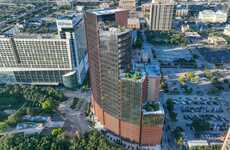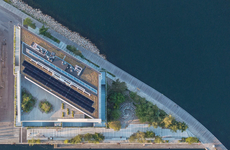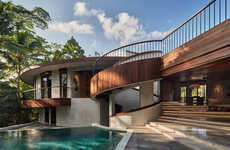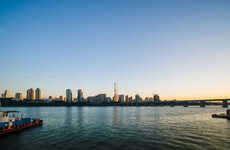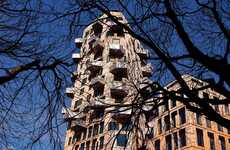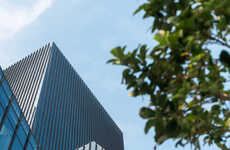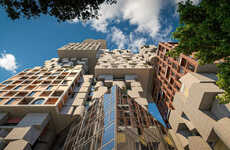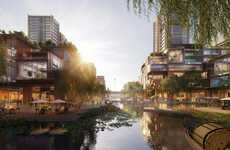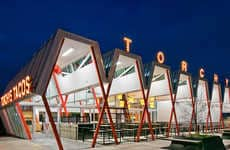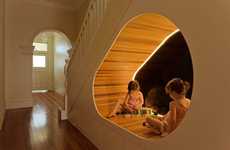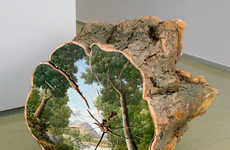
Bjarke Ingels' New York Tower Design Features Spiral Architecture
Rahul Kalvapalle — February 9, 2016 — Art & Design
References: big.dk & blog.archpaper
Danish architect Bjarke Ingels is making use of the wonders of spiral architecture for The Spiral, an aptly named skyscraper that is set to be constructed around the Hudson Yards development of New York City.
The Spiral will be located along the strip of 57th Street that is aptly dubbed Millionaire's Row. What's unique about this skyscraper is that it will use an artificial foundation that will effectively create a high-hanging neighborhood that will be suspended above a train yard. This is indeed an interesting 'twist' on typical examples of spiral architecture.
This skyscraper will strictly incorporate office and retail space and is expected to integrate a variety of green infrastructure elements, making this a welcome addition to the New York City skyline.
The Spiral will be located along the strip of 57th Street that is aptly dubbed Millionaire's Row. What's unique about this skyscraper is that it will use an artificial foundation that will effectively create a high-hanging neighborhood that will be suspended above a train yard. This is indeed an interesting 'twist' on typical examples of spiral architecture.
This skyscraper will strictly incorporate office and retail space and is expected to integrate a variety of green infrastructure elements, making this a welcome addition to the New York City skyline.
Trend Themes
1. Spiral Architecture - Exploring innovative design possibilities for skyscrapers through the use of spiral architecture.
2. Urban Sustainability - Incorporating green infrastructure elements to create environmentally-friendly buildings in urban environments.
3. High-hanging Neighborhoods - Creating suspended neighborhoods above existing infrastructure, such as train yards, to optimize land use in densely populated cities.
Industry Implications
1. Architecture and Design - Opportunities for architects and designers to push the boundaries of traditional skyscraper design through the use of spiral architecture.
2. Real Estate and Construction - Developing high-rise projects that incorporate green infrastructure and innovative design elements to meet the demands of sustainably-minded consumers.
3. Urban Planning - Utilizing high-hanging neighborhoods to optimize land use and create functional spaces in densely populated cities.
4.3
Score
Popularity
Activity
Freshness

